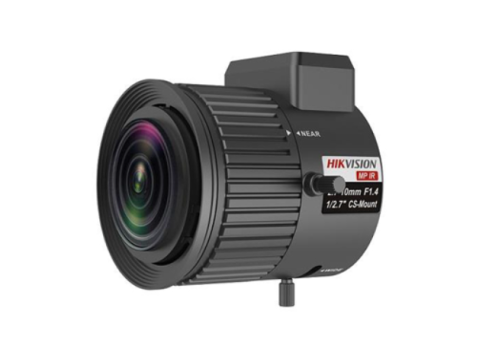Overview of Surveillance Camera Lenses
Surveillance camera lenses are vital for achieving the desired field of view, image clarity, and light sensitivity. They can be categorized into two main types:
- Built-in Lenses: Fixed and non-replaceable.
- Removable Lenses: Purchased separately and interchangeable.
When choosing a lens, focus on essential features like focal length, sharpness, and aperture.
Key Features to Consider
1. Focal Length
- Determines the camera's field of view (FOV) and level of detail.
- Short focal lengths (e.g., 2.8mm): Wider FOV but less detail at a distance.
- Long focal lengths (e.g., 12mm): Narrower FOV with more detail at a distance.
Calculation Example:
The relationship between focal length (f), distance to the object (S), and resolution clarity is critical. For optimal sharpness:
- A camera with an 8mm lens will focus sharply on objects 80cm or farther.
2. Aperture and Light Sensitivity
Aperture controls the amount of light entering the lens and is represented as f-number (k).
- Smaller f-numbers (e.g., f/1.4): More light, better for low-light environments.
- Larger f-numbers (e.g., f/2.8): Less light but greater depth of field (DOF).
Automatic Aperture (AR):
- Essential for outdoor cameras with fluctuating light conditions.
- Ensures clear images even in bright sunlight or low light.
3. Varifocal Lenses and Zoom
- Varifocal Lenses: Allow manual adjustment of focal length to set the FOV after installation.
- Motorized Zoom (Transfocators): Offer remote control of zoom and focus, ideal for active monitoring.
Benefits:
- Varifocal lenses are great for flexible setups where precise positioning isn't predetermined.
- Transfocators are beneficial for live surveillance but require skilled operators and may be less durable due to moving parts.
Practical Recommendations
- Built-in Lenses: Suitable for plug-and-play installations, especially in budget systems.
- Varifocal Lenses: Ideal for dynamic setups and installations requiring precise FOV adjustment.
- Zoom Lenses: Best for professional-grade systems with active monitoring by security personnel.
When setting up the lens, always test under low-light conditions to ensure sharpness. Poor adjustment during bright conditions can cause blurry footage at night.
Surveillance camera lenses play a pivotal role in system performance, so choose wisely based on application, environment, and budget.

